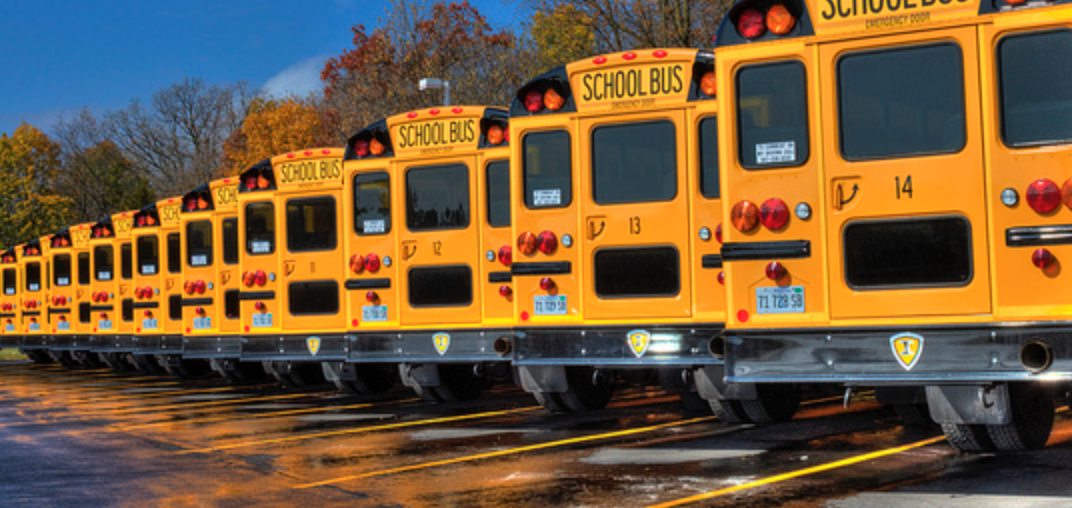The current administration has championed school choice policies that would allow states, or in some cases companies, to essentially fund private school tuition for students who choose not to attend their traditional public school. Supporters argue it's a way to give low-income students access to schools that might be out of reach because of cost. But opponents argue the policies funnel taxpayer dollars to private schools of variable quality and point to research that suggests choice policies do little to combat segregation based on race and income. And others question what choice would actually mean for families who don't have other quality options nearby or transportation to get there.
Transportation, then, is at least one part of the formula that has to be included in weighing choice policies. And access depends on where students live, according to a new report published by the Brookings Institution.
In Texas, despite high-profile support from the federal government and from the Lieutenant Gov. Dan Patrick, school choice policies were shot down in the state's legislature this session, largely thanks to rural Republicans and Democrats, who objected to sending public dollars to private schools. Forty of the 50 Republicans in the House who voted in favor of an amendment that would essentially prohibit funding for any school choice programs for two years represented a district with at least one rural school district in it, according to an analysis by the Austin American-Statesman.
Still, despite its setbacks in Texas, the school choice movement has deep pockets and a national advocate in charge of the Department of Education, Secretary Betsy DeVos.
Urban Institute researchers Matthew Chingos, formerly of the Brookings Institution, and Kristin Blagg, analyzed national data from the 2014-2015 school year in order to see the extent to which different school choice policies would potentially increase access for families to other public schools, charter schools and private schools.
Public Schools, Within Districts
They found 83 percent of all families would have access to at least two public elementary schools within five miles in their same school district. Only 60 percent of rural families, however, would have the same option. Their model assumes that every school in the student's district would be open to new enrollment.
Public Schools, Between Districts
If the state's policy supported inter-district choice, the researchers estimated that roughly half -- 54 percent -- of families would have another potential school in another district within five miles. Here, rural families fare only slightly better than urban families; 74 percent would have more options available to them under an inter district plan within ten miles compared to 72 percent of urban families.
Charter Schools
Tending to cluster in urban areas, charter schools are much closer to urban families than rural families. Sixty-eight percent of urban families have a charter school within 10 miles, compared to only 17 percent of rural families.
Private Schools
If a voucher program supported any private school, regardless of testing requirements or background, 82 percent of families would have a private elementary school within five miles. But like charter schools, private schools tended to be concentrated in urban areas.
Questions of school quality aside, the report underscores the importance of transportation to school access.
"Transportation can pose a real barrier for students, particularly those in low-income families," wrote the authors in a blog post about the study. "A study of families in Washington, DC, which does not provide yellow bus transportation to most students, found that parents were willing to choose an elementary school with proficiency rates up to 11 percentage points lower if the school was one mile closer to them."
In another study published in April, Chingos and Blagg look at the transportation and choice policies in several cities, including New Orleans, Denver and Washington, D.C., determining that "student transportation can have a substantial effect on the quality of a student’s education and the composition of her peer group."
In Denver, for example, students were only offered transportation to school if they attended their neighborhood school or an alternative if their own school was designated as low performing. Otherwise, parents were on their own to figure out how to get their children there.
Under the Houston Independent School District's variety of magnet programs open to students, transportation is provided to students who want it and live further than two miles from the school.
But even in districts where students are offered transportation, distance itself can be a barrier. And for highly mobile populations, the logistics of updating address information can also present a challenge. The picture also gets more complicated when families have to factor in school capacity and admissions requirements.
In short, the researchers argue, school choice is far from a national, one-size fits all policy. Rural families tend to have fewer options. And even in urban areas, there are a number of factors that create barriers for some families, particularly in a sprawling city like Houston.


